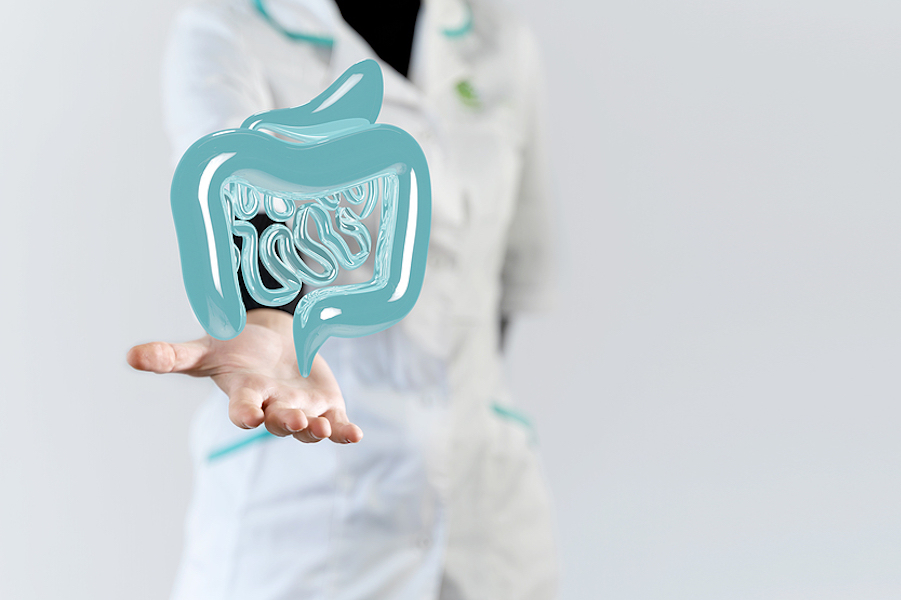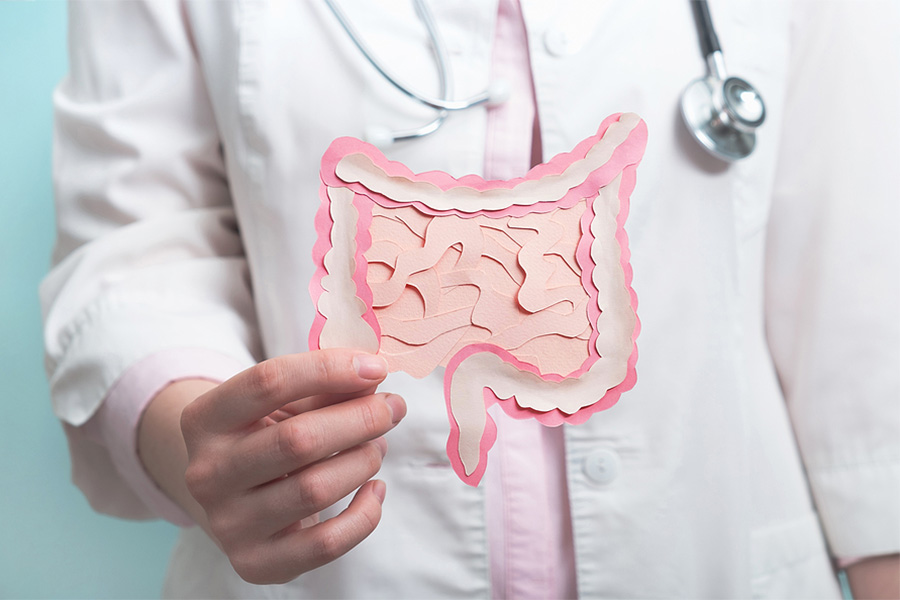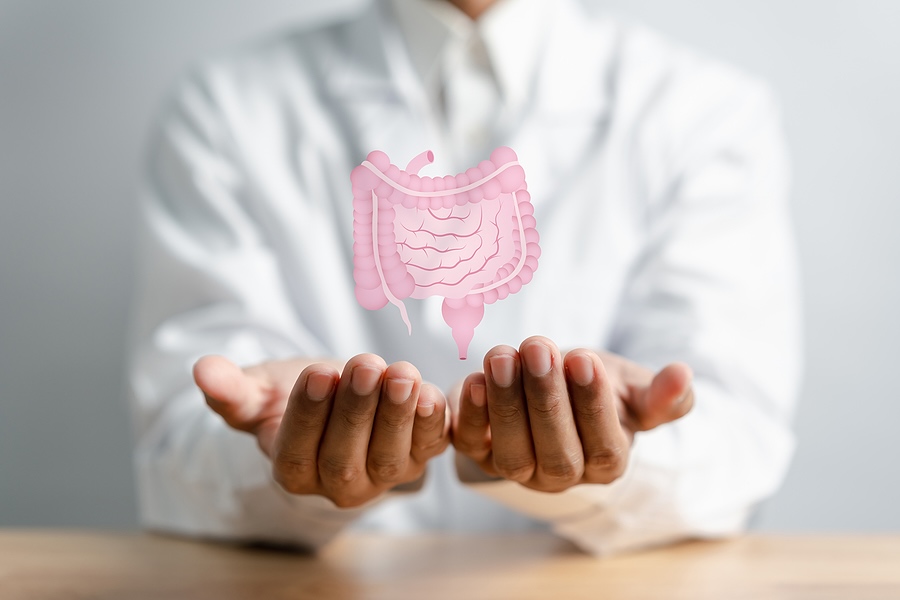When women come to me complaining of bloating, gas, and pain in their stomachs they often give me a funny look when I tell them that yeast could be the culprit. Sure, they’ve heard of oral thrush or vaginal yeast infections – but many have never heard the word candida at all. Have you?
People have been talking about candida and what impact it might have on the body for decades. There’s great debate over the topic among healthcare professionals. Like so many things that functional medicine practitioners have been looking at for years, many conventional doctors insist that persistent candida overgrowth doesn’t contribute to many of the symptoms women are experiencing.
Although there’s not enough concrete research showing causal relationships between candida overgrowth and some of these major health issues, I have heard enough stories from patients to believe we need to continue talking about it until everyone is aware. And in recent years, available research on the link between candida colonization and gut health has grown – so that’s one area we should really be paying attention to.
Let’s take a look at what we know about candida and how to handle it if you and your healthcare provider think it might be behind your chronic symptoms.
What is Candida?
Candida is a species of yeast. Yeast is classified as a fungus, and there are approximately 1,500 identified species to date. Although there are many types of candida, candida albicans is the most common, found in 40-60% of adults. Candida is often found in the mouth and intestines, and we need it in small amounts, to aid in digestion and absorption of nutrients.
But when there’s an overproduction of candida it can break through your intestinal wall and enter your bloodstream. And that’s when the problems begin. When candida hits your blood, toxic by-products can be released into your body and cause major health issues such as candidiasis (candida infection) and leaky gut syndrome.
What Causes Candida to Thrive?
Your gut microbiome is made up of trillions of bacteria, both beneficial and not. When properly balanced, the beneficial bacteria help keep candida from taking over. Unfortunately, there are many factors in our modern lifestyle that mean that these healthy bacteria can’t always maintain the right balance to do their job. So really candida is only an opportunistic organism.
Some of these factors include overconsumption of alcohol, a diet high in sugar and simple carbohydrates, foods high in yeast content like wine, kombucha and mushrooms, too much stress, and taking certain medications – like oral contraceptives and antibiotics. Even things that are typically touted as healthy – like eating fermented foods – can contribute to overgrowth of candida.
How Can I Recognize I Might Have Candida Overgrowth?
In functional medicine, we look at the whole picture, not just one piece. It’s the best approach, because it takes all of your symptoms into account rather than keeping each one in isolation. But often, these symptoms overlap in many conditions, so it takes a lot of time and information to determine what’s at the root of your issues.
This happens a lot with candida overgrowth because it shares symptoms with so many other health problems. Not only that, but you can have symptoms that seem totally unrelated, but are actually all caused by candida overgrowth. So when you first begin to explore what’s behind your symptoms, you may end up with a long list of possibilities, and you’ll have to do more detailed testing or try several natural solutions to find relief. You have to have patience, but I promise you it’s possible to reverse a candida overgrowth if you’re willing to put in the time.
If you have symptoms like skin and nail fungal infections (athlete’s foot, toenail fungus, etc.); chronic fatigue; digestive issues; memory or concentration difficulties; skin issues like eczema or psoriasis; mood swings, depression or anxiety; frequent vaginal infections, urinary tract infections, or rectal itching; severe seasonal allergies; itchy ears; or autoimmune diseases, the possibility of candida overgrowth is worth exploring.
As you can see that’s a long list of symptoms that could be caused by many other conditions. That’s why candida overgrowth is so hard to diagnose definitively, and also why the debate about it rages on. But there are tests that can give you great information, and above all I think that successful treatment speaks for itself. After all, the goal is to feel better, whatever the root cause, right?
What Kind of Testing Can I Have to Determine If Candida is the Culprit?
A blood test to check for IgG, IgA and IgM antibodies is a great place to begin. Most medical labs can do this test easily, and if your levels are high, that could be an indication that you are dealing with candida overgrowth. It’s important to know, however, that often this test can come back negative but a stool or urine test comes back positive. So if you get a negative result, but still feel lousy and can’t find answers, I suggest you take your testing a step further.
A urine test checks for D-arabinitol, a waste product of overgrowth. This can help you discover if you have candida in your small intestines or gut. A stool test is probably the most accurate one available, as long as it’s a comprehensive test, not just the standard stool test. This test checks for candida in your colon and lower intestines. Better still, it often gives you information on the species of yeast, and helps determine which treatment will bring you the best results.
How Are Candida and Gut Health Connected?
So many conditions may be caused or impacted by candida overgrowth including diaper rash, vaginal yeast infections, and oral thrush; chronic fatigue syndrome and fibromyalgia; mood disorders; chronic sinus issues; and more. But the piece that I am most interested in is the way that candida overgrowth impacts gut health. That’s because our gut health has such a big connection to overall health – so if something is off in your gut microbiome, it’s essential to figure out what’s going on and treat it!
Left untreated, an overproduction of candida in your gut can deteriorate the walls of your digestive system, and when that happens, the candida can enter your bloodstream. Why is that a problem? In your blood, the fungus releases toxic byproducts into your body. One of these, acetaldehyde, is known as a carcinogen, and causes all kinds of symptoms, like nausea, headache and fatigue. It can also cause liver damage, which leads to a wide range of problems.
If you know anything about leaky gut syndrome, you’ll probably see a connection. A leaky gut creates an ideal situation for this opportunistic fungus, allowing it to multiply quickly, then pass into your bloodstream alongside the undigested food particles. And at the same time, candida can colonize in the gut, damaging the intestinal lining. So it’s hard to know which comes first, and one condition certainly feeds off the other.
If overgrowth releases too many toxins into your bloodstream, your liver has to work overtime to filter them out – and it might not be able to keep up. When your liver is overburdened, the results can be difficulty regulating blood sugar levels, storing nutrients, and regulating hormones.
All of this can lead to chronic inflammation in your body, which can influence weight gain, rashes, and difficulty concentrating, among other things. Chronic inflammation can also eventually lead to autoimmune diseases.
Do you see now how it’s all connected – and how important it is to keep your gut free from candida overgrowth? Now, let’s take a look at how that can be done.
How Can I Treat Candida Overgrowth?
There’s no quick fix for treating candida overgrowth. You’ll have to be patient and persistent, and it will take a commitment to changing your eating habits fairly dramatically at first. But you won’t have to eat that way forever, and it’s worth it if you can get rid of symptoms that have been plaguing you for years. A multi-step approach will flush candida from your system, heal your gut, and keep you feeling great.
First Step: Cleanse
Before you can begin real healing, you need to get the candida out of your system – and the best way to do that is to starve it. Candida feeds on sugar, so you’ll need to eliminate all sugar – natural or added – and anything that converts to sugar (carbohydrates). It may feel like you can’t eat much of anything at first, but remember this is temporary. For the first day or two, focus mainly on organic, non-starchy vegetables. And don’t forget to drink plenty of filtered water every day to help flush toxins from your system.
Second Step: Heal
Healing is a slow and steady process, so you can’t rush it. During this healing phase, I recommend following an anti-candida diet made up of organic, non starchy vegetables; healthy fats like nuts, seeds, olive oil, avocados, and coconut oil; and healthy proteins like wild caught fish, grass fed beef, and free range poultry and eggs. Because fruit and starchy vegetables are naturally high in sugar, and grains are converted to sugar, it’s best to avoid these while healing. But you will be able to add them back in moderation once you reach the maintenance step.
Coconut oil and ghee contain fats that are antifungal and give your body a boost of energy, so try to consume a few tablespoons of these each day while healing.
Another important part of healing is adding as many beneficial bacteria to your system as possible. While fermented foods are usually a great way to boost this good bacteria, when healing they can actually cause more candida growth. That’s because they contain yeast themselves, and your system is really sensitive before it’s fully healed. It’s probably best to avoid fermented foods initially, and add them slowly back in to see how your body reacts. That means that a high-quality probiotic will be more important than ever, to add friendly flora back into your gut.
Because candida overgrowth can rob your body of minerals, salts, and antioxidants, consuming herbs high in antioxidants like cinnamon, tumeric, ginger and green tea can help the healing process as well.
You’ll need to be sure you’re supporting both your liver health and your immune system, as well as healing the gut lining. My Acute GI Relief Program is a great way to support your gut and immune system as you heal.
Related article: Probiotics —for Life!
Third Step: Maintain
Maintenance is often the most difficult part of any process. When you have a goal you’re working towards, it’s easier to avoid certain habits and foods. But when you’re looking at keeping yourself healthy for the long haul, some of those changes need to become permanent. But don’t despair – I’m not saying you can never have another glass of wine or cookie.
Moderation is so important. The 80/20 rule makes the most sense to me — follow healthy guidelines 80 percent of the time, and you can have a little leeway the other 20 percent of the time. One thing I’ve experienced myself, and heard from many patients and friends, is that once the healthy habits become part of a regular regimen, you might feel so great you realize you don’t even want things you used to indulge in regularly. You’ll find new favorites, and build new habits.
There are a few tips you should continue to follow throughout your life to remain free from candida overgrowth and feel your best.
- Don’t overindulge in alcohol, sweets or carbohydrates – especially simple carbs
- Only use antibiotics when absolutely necessary – never as a default treatment
- Take a high-quality probiotic regularly to keep your gut flora balanced. And a daily multivitamin can ensure that your body gets all the nutrients it needs to stay healthy and strong.
- Choose organic whole foods whenever possible. Load up on delicious fresh veggies and you won’t need the simple carbs to feel satisfied.
- Manage stress. Find ways that you love to release tension and find joy in your life!
- Some may need an antifungal herb or even fluconazole also known as diflucan to help resolve the yeast overgrowth. But working with a practitioner trained in functional medicine, this can be dealt with easily.
When Candida Overgrowth Becomes Severe
There are rare instances when severe infection can result from candida overgrowth. Antibiotics can trigger yeast problems by killing off the good bacteria, allowing the yeast population to take over. And very rarely, yeast can spread to the heart, bones, blood and brain in what’s known as invasive candidiasis, which can actually cause death. This most often happens in a hospital setting to individuals with severely compromised immune systems, so it’s not something you should worry about excessively. But it certainly makes me think it’s worth the effort to rid yourself of candida overgrowth before there’s any possibility of getting to that point
Address Candida to Heal Your Gut and Live a Healthy Life!
Your gut health is so connected to how you feel overall. That’s why it’s so important to pay attention to what might be behind digestive symptoms, and attend to symptoms right away. If you think you might have candida overgrowth, talk to your practitioner. Don’t give up if they don’t recognize what could be going on – be persistent in asking for testing, or find a functional medicine practitioner to work with. You have the power to take control of your health, and ridding your body of candida overgrowth could make all the difference!
References:
https://www.mindbodygreen.com/0-8376/10-signs-you-have-candida-overgrowth-what-to-do-about-it.html
https://www.mindbodygreen.com/0-8376/10-signs-you-have-candida-overgrowth-what-to-do-about-it.html
https://draxe.com/candida-symptoms/
https://drjockers.com/heal-candida-naturally/
https://en.wikipedia.org/wiki/Yeast








